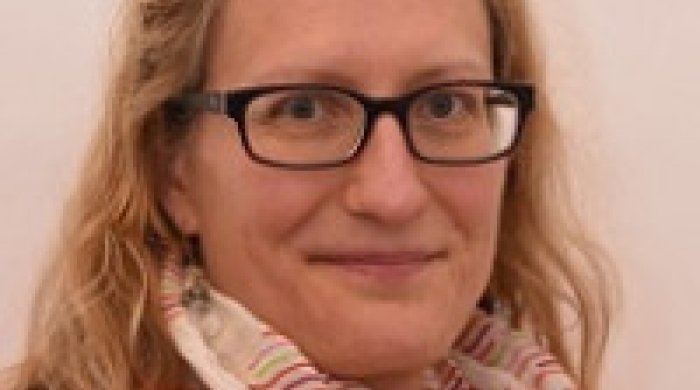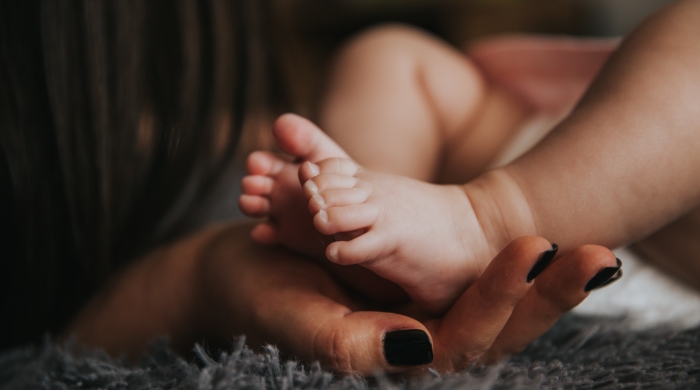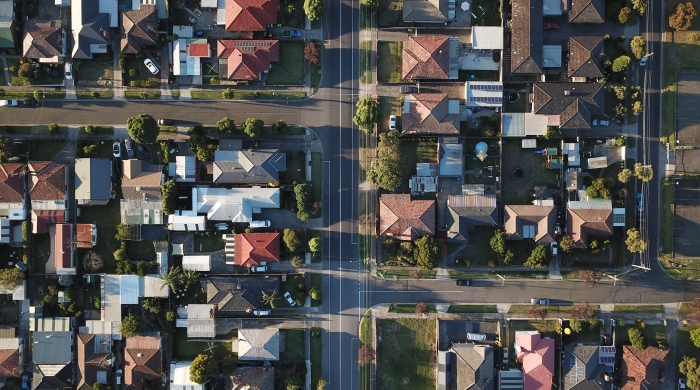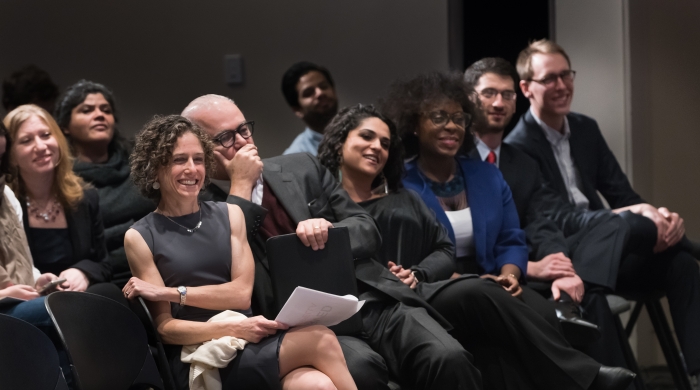
In 2019, Drs. Maaike Bouwmeester and Camilla Matuk received seed funding from IHDSC for "Designing Frameworks for Multimedia Use in Informal STEM Programs for Young Learners." Since receiving that award, Dr. Bouwmeester and Dr. Shilpa Sahay have collaborated to learn about hands-on STEM learning at elementary age level, exploring the values and challenges of teachers who implement these strategies and how they support them across a variety of educational settings. STEM learning at an early age is important for many reasons, not the least of which is that jobs that require STEM are quickly outpacing the manufacturing jobs of the past. Powerful early learning experiences shape identities, develop habits of mind and help kids acquire contextualized knowledge that prepare them for future learning. At the same time, researchers see that high quality, hands-on and inquiry based approaches in STEM are just not happening by and large. Bouwmeester and Sahay were interested in taking a closer look at schools and teachers that were doing it really well, and because of their partnership with the League of Young Inventors (LYI), exploring the role of external curriculum and pedagogical providers. They started with a research agenda that focused on informal learning spaces but more recently have included schools and formal learning environments. The conversation was edited for clarity and length.
What makes informal learning programs important in the context of developing STEM interest?
Maaike Bouwmeester: We know that STEM learning can be fostered and nurtured at very early ages. Kids are so curious and they love to explore and they don't have a lot of the self-efficacy or other barriers that cause them to say ‘Oh, I'm not good at this.’ They just want to make things and build. But often schools don't really have the ability to support these kinds of messier, materials heavy, hands-on activities. Sometimes that’s because of competing with more traditional academic goals, where there's a lot of emphasis on getting kids to read earlier, or where math, writing and reading are foregrounded over other topics due to testing and other pressures. Sometimes it’s a lack of resources, teacher preparation or support. Informal learning spaces can remove those barriers - there's often more space for kids to go off script, explore and build.
There is also a movement right now in terms of STEM learning and equity, which Shilpa, Camilla, and I are really interested in exploring. How do we build on programs that make these opportunities accessible for everyone in both the informal and formal classroom based learning environments?
What are some findings or takeaways from the exploratory research that you've conducted so far?
Bouwmeester: Through our IHDSC Seed grant, we partnered with the League of Young Inventors, a non-profit STEM curriculum developer that provides the kind of STEM-focused hands on curriculum I just mentioned. LYI works closely with educators in informal and formal learning settings to support the implementation of these units in practice. Our SEED grant funded exploratory research with the goal of defining a larger research agenda; we were eager to observe and learn as much as we could from close observation of three educational settings.
One of our emergent themes was around media usage. We were interested in the varying use of media to support learning when implementing a bridge unit with second graders.
The League’s materials included videos and other multimedia presentation materials. You could say it was a turnkey approach. For teachers new or unfamiliar with the bridge unit, the LYI materials allowed them to get started right away. The media were well received by teachers but they sometimes felt ill equipped to integrate it into the rest of the curriculum in the ways LYI imagined. For more experienced teachers, in contrast, they were quick to use the media as launching points for activities and discussion. So one of the questions for further exploration is how to structure professional development around integration of media and learning activities in such a way that it is more generative than passive.
In one of school settings, we observed that a few teachers created their own videos when they went online during the COVID pandemic -- even though these videos were fairly crude in comparison, they were also really creative and fun- including simple stop motion, stick characters and the teacher’s own voice for voiceovers and narration. Kids were super engaged by them. We were intrigued by the use of characters, story and humor to introduce concepts such as compression, tension, and bridge structures in such an approachable way.
We also looked at how media was used to share and document children’s work. You know, I think a lot of teachers were like deer in headlights in the beginning of the pandemic, but then some found ways to use media and new tools in new and surprisingly useful ways. So that was an interesting finding that we'd like to explore more. What can we learn from the ‘emergency’ inspired uses of media that may have inspired more willingness by teachers to explore new approaches?
So in the end, out of this seed grant, we created three different research presentations at AERA, SITE, and we just completed a book chapter for preservice teachers. Each one explores a different angle on this emerging research agenda.
In the AERA presentation we actually looked a little bit more at the challenges, but also the opportunities of what happened when teachers teaching in this hands-on mode shifted to online learning. There were so many challenges. Aside from equity issues around access to technology and media and caregivers support in the learning - those were just a given - there were also challenges that teachers were dealing with. The parents and kids really struggled when they didn't have all the right things in place to support learning during those early months of the COVID pandemic. But we were equally interested in what teachers did learn or what insights emerged from this kind of emergency mode of teaching that may have some merit in terms of long-term changes in their approach.
Shilpa Sahay: Last summer, when we were about to do our data collection and data analysis, that was the time when pandemic had hit, and we could actually see the transition of schools going from face-to-face to online. Our findings are covered both aspects of the bridge unit in the classroom setting and when the teachers actually had to go immediately to emergency remote teaching mode. This year, we did not do another data collection, but we did talk to teachers. For a couple of teachers it was the second time doing the bridges unit in the online modality, so we spoke with our teachers to enhance and refine our own findings.
It seemed that the teachers and students themselves evolved over time with media usage or refining their own process of what to keep and what not to keep, expanding from using only Google classroom to making a website for the sharing of students' work. In one of the school settings, they said that when students make the bridges out of their own home, with raw material, they are more creative and it really works well for them. There were a lot of trials and errors and refinements, which we actually analyzed by discussing our findings with the teachers this year.
Could you tell us about how you developed your partnership with the League of Young Inventors and how the partnership impacted your research?
Bouwmeester: Because I knew Meghan Eison, founder of LYI, from another context, she asked if I would become a thought partner with her at this early stage. Throughout the past five years, I've seen their organization grow. Along with her co-founder Kiera Nieuwejaar, they’ve introduced curriculum and strategies that connect STEM to real world problems in a child-friendly way. They know that we’re going to need these young kids to solve these problems in the future, so these kinds of multi-disciplinary, active learning approaches are critical. The LYI started as an afterschool program, but now they have completely pivoted to developing curriculum that can be used in schools. They’ve moved from implementing the programs themselves to now working with teachers on a train the trainers model so that teachers can implement the curriculum themselves.
With the help of future grants, we’re hoping to further develop more units and the professional development piece in partnership with the League. We’re all committed to doing this with a strong focus on equity. How might we reach communities that typically don't have access to these more hands-on approaches to learning, and these high quality learning environments that we think are so impactful for students? Part of this will be fundraising which LYI is actively doing as we speak, part of this is developing Professional Development, part of this is convincing leadership and teachers that these approaches to learning should be central even at the elementary school level.
You've talked some about how the pandemic has impacted your project, particularly around the student and teacher experience. We'd also be curious to hear about its impact on your ability to conduct the study. Did it force you to adapt some of your research methods?
Bouwmeester: Yes, in a big way. It impacted us in the sense that we had no classrooms to observe. All our work on getting IRB clearance to observe and talk to kids and teachers, we couldn't do that in the same way. What we did have access to, was being able to talk to the League staff who worked closely within schools, and we went back to interview teachers. Because of the use of more technology like Google Classrooms, and the documentation of student work through digital media, we were able to do a pretty careful document and instructional analysis. What were the approaches? What were the media and technologies used and how were they used?
Can you tell us a little bit about how the IHDSC Seed funding has served as a springboard for this research and what your next steps are?
Bouwmeester: With IHDSC’s help, we recently applied for an external research practice partnership grant. It’s another proposed collaboration with the League of Young Inventors. We're shifting from our focus on observing how these pedagogical approaches play out in schools between teachers and kids to thinking about how we might better support professional development so that these opportunities and approaches can scale. This will be a two-part effort where the first part is to identify partner schools across a broader spectrum. A sample of three schools is not going to give us all the input we want in terms of developing the professional development that we want. We're going to look for schools that really cross the range of social economic brackets, in terms of resources versus lack of resources. We hope to engage in a co-design process where it's not us coming in with preconceived ideas, but instead using a design process that's very participatory and inclusive.
The second part of the project will focus on the development of the proposed design using a design based research approach. We will implement our first iteration of this co-design professional development with the goal of refining and improving it through a couple of different iterative cycles. We are looking to identify partners that will hopefully get us a more inclusive voice and design partnership.
Sahay: I would just add to the last part about expansion. I just wanted to share from our presentation at SITE, which we did last week, that out of this research, we could see people showing interest in collaborating and understanding more about our work, because obviously this is kind of an unprecedented time where teachers are doing or conducting science units and trying to still hold onto their collaborative hands-on project based approach in the online medium.
Seed Award Stories
Seed Award Spotlight: Dr. Susannah Levi
In 2019, Drs. Susannah Levi and Daphna Harel received a seed award for their project, "High Variability Phonetic Training as a Mechanism for Improving Underlying Reading Skills in School-Age Children." Read about what came from the project, how COVID-19 impacted research, and what else might grow out of their seed award.
Reexamining the Link Between Pregnancy Intentions and Maternal, Newborn & Early Life Outcomes
Dr. Sarah Cowan received an IHDSC Seed Award in 2019-2020 for a project that reexamines and extends previous research on the links between pregnancy intentions and early life outcomes by analyzing data from the Pregnancy Risk Assessment Monitoring System (PRAMS) and 2-year follow-up data from six states.
The State of Black Suburbs
"For many folks, when I start to talk about the Black suburban experience, they think that it's this moment of meeting of white and Black, of distance coming together. But there's a far more nuanced and complicated reality." Drs. L'Heureux Lewis-McCoy and Kimberley Johnson received seed award funding for "The Black Suburban Governance Project" in 2020. Along with PhD candidate Kiara Douds, they discussed their research approach and early findings.
Learn About IHDSC Initiatives
IHDSC Seed Award Program
IHDSC is committed to funding new projects that bridge multiple domains of expertise and further the mission of the Institute.
IHDSC Working Group Program
The IHDSC working group program gathers diverse faculty and researchers to achieve intellectual and practical goals aligned with our mission. Working groups are faculty-initiated, include scholars from multiple disciplines, and involve collaboration toward a specific goal.






